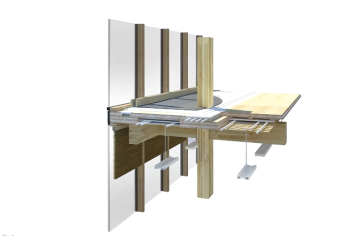
Climate change will impact how we live and design in the future. To slow the rate of climate change we need to rethink the way we build. Sustainable design has many meanings but for my practice it starts with the recipe of building and the choice of healthy ingredients. The materials of a building and especially the structural materials represent the embodied carbon in a building’s life. Timber is an important ingredient in lowering a building’s embodied carbon footprint. Our practice designs, innovates, engineers and advocates for timber buildings that can reduce our carbon footprint and build beautiful, healthy cities for tomorrow.
Speaker: Michael Green, Principal @ Michael Green Architecture CA
Michael Green is an award-winning architect known for his research, leadership, and advocacy in promoting the use of wood, new technology and innovation in the built environment. He lectures internationally on the subject, including his TED talk, “Why We Should Build Wooden Skyscrapers.” Based in Vancouver, Canada, Michael founded MGA to create meaningful and sustainable change in building through innovation in construction sciences and design. Michael and his team are ambitiously extending the boundaries of mass timber construction, having completed some of the largest modern timber buildings in the world, including The Wood Innovation Design Centre and T3 Minneapolis. He is also the founder of DBR | Design Build Research and TOE | Timber Online Education, a non-profit school and research platform dedicated to teaching the design and construction of socially, culturally and environmentally relevant student-led installations, with a focus in systemic change in building for climate, environment, disaster and global shelter needs. Michael is a Fellow of the Royal Architectural Institute of Canada and has been honoured with North America’s most prestigious awards, including two RAIC Innovation Awards and three Governor General’s Medals. In 2014, Michael received an honourary doctorate degree from the University of Northern British Columbia. He is the co-author of ‘The Case for Tall Wood Buildings,’ now in its second edition, and ‘Tall Wood Buildings: Design, Construction and Performance.’ An avid traveler and adventurer, Michael has explored remote regions on every continent and loves ice climbing. mountaineering, ocean kayaking and biking.

